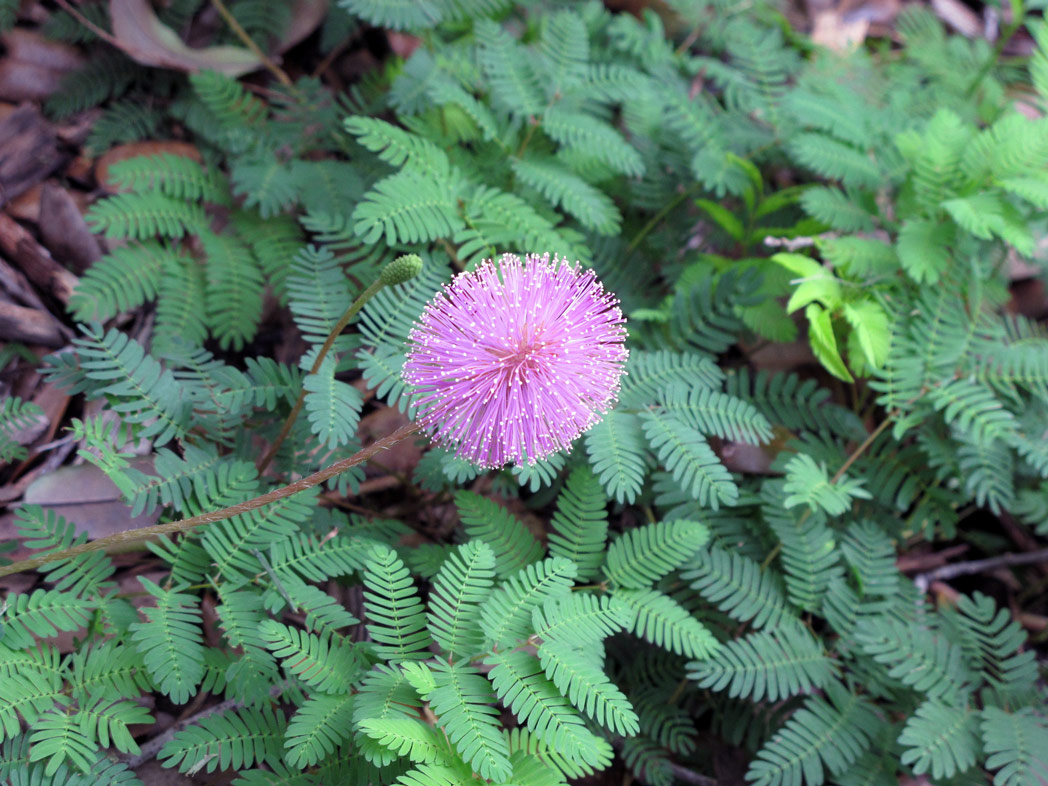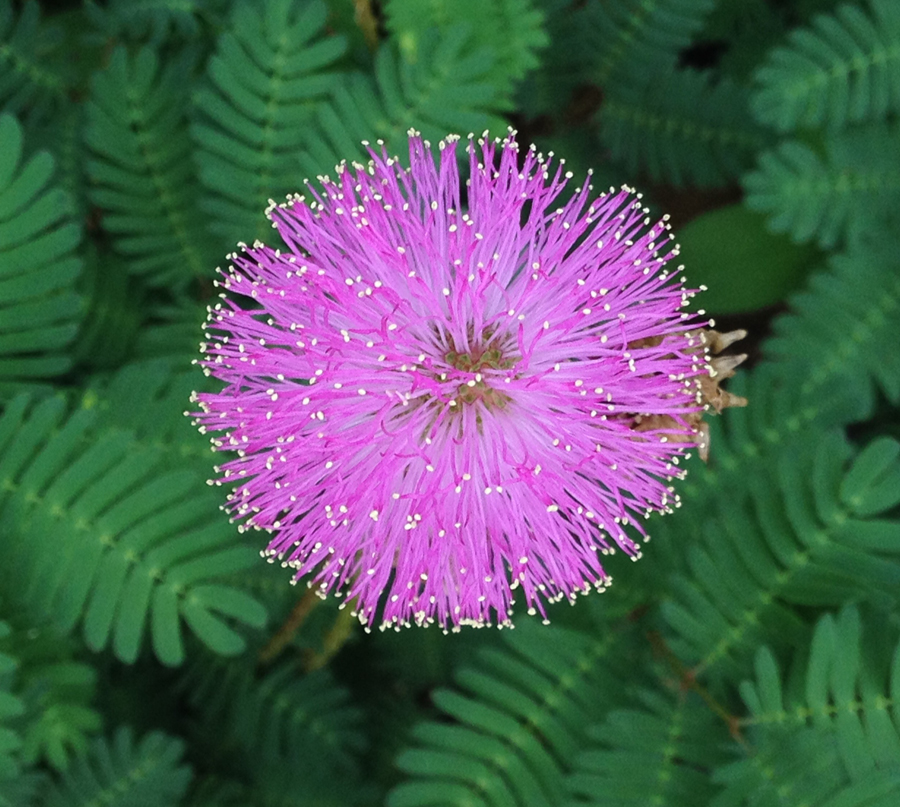Sunshine mimosa
Pictured above: Sunshine mimosa (Mimosa strigillosa) by Lisa Roberts. Click on terms for botanical definitions. View post as a PDF.
Also known as Powderpuff, Sunshine mimosa (Mimosa strigillosa) is a prostrate, mat-forming perennial wildflower that occurs naturally in open, disturbed areas, along roadsides and, infrequently, in pinelands and forests. It typically blooms spring through summer. Its showy pink to lavender flowers are pollinated mainly by bees but attract butterflies, as well. It is the host plant for the little sulphur (Eurema lisa) butterfly.

Each pompom-like inflorescence is composed of many inconspicuous flowers that form a 1-inch globe. What is most visible are the prominent pink stamens topped with yellow anthers that give this plant its distinctive appearance. Flowerheads are born on long stalks that emerge from leaf axils. Leaves are bluish-green and featherlike in appearance. They are bipinnately compound, having 15± pairs of linear leaflets. Stems are hairy and woody to herbaceous. Seeds are born in 1-inch long rough pods.
Unlike its cousin, Sensitivebrier (Mimosa quadrivalvis), Sunshine mimosa does not climb or have hooked prickles. But like its cousin, its leaves fold up when touched.
Family: Fabaceae (Legume, bean or pea family)
Native range: Nearly throughout peninsular Florida
To see where natural populations of Sunshine mimosa have been vouchered, visit www.florida.plantatlas.usf.edu.
Lifespan: Perennial
Soil: Dry to moist, well-drained sandy soils
Exposure: Full sun to minimal shade
Growth habit: 2–9” tall
Propagation: Seeds, cuttings
Florida regions of landscape suitability: North, Central, South
Garden tips: Sunshine mimosa is a great groundcover replacement. It is low-growing, spreads readily and tolerates being mowed. It is adaptable to both dry and moist sites. It will not climb over other plants or structures, but it sprawls continuously and sets down roots as it grows. It is best to plant it in areas where obstacles will control its spread. It is a prolific bloomer and adaptable to both dry and moist sites. Though quite drought tolerant, it is slow to establish and needs adequate water during this time.
Sunshine mimosa is available at nurseries that specialize in native plants. Visit PlantRealFlorida.org to find a native nursery in your area. Seeds may be available from the Florida Wildflower Growers Cooperative at www.FloridaWildflowers.com.

